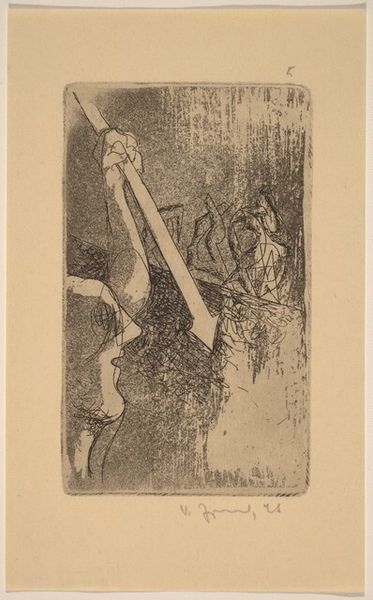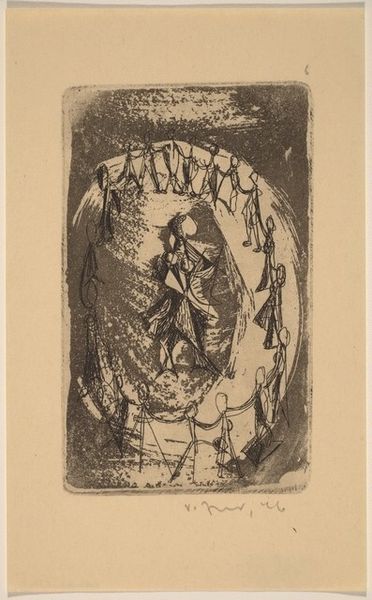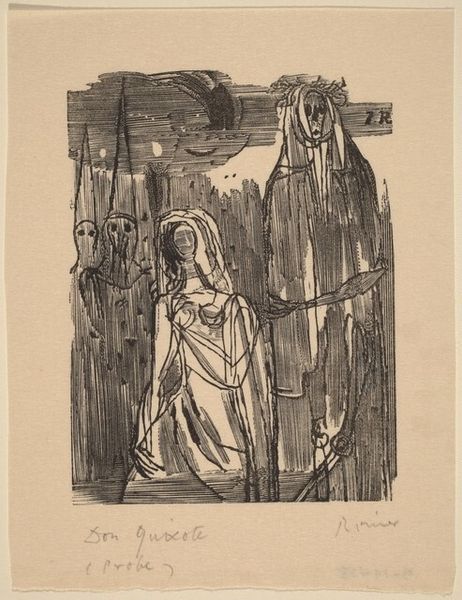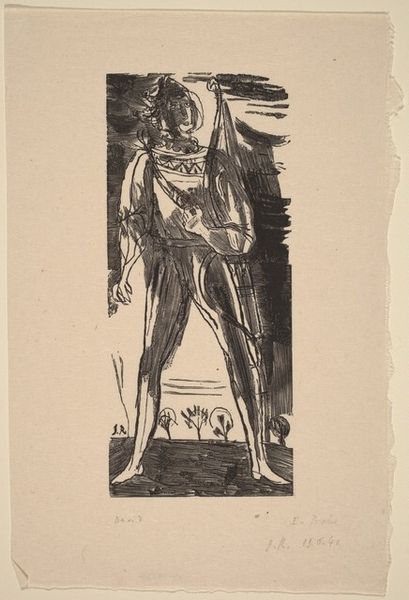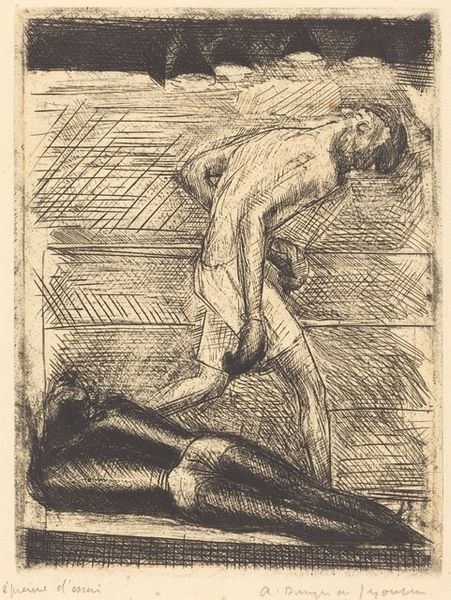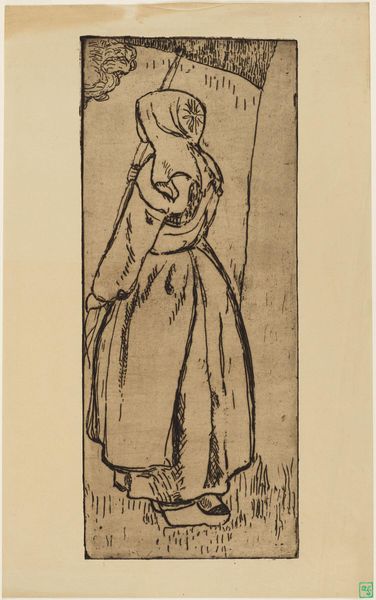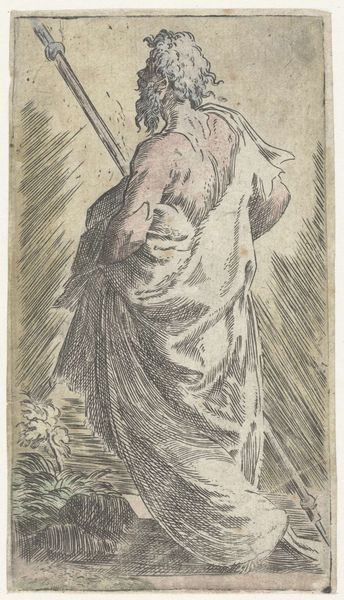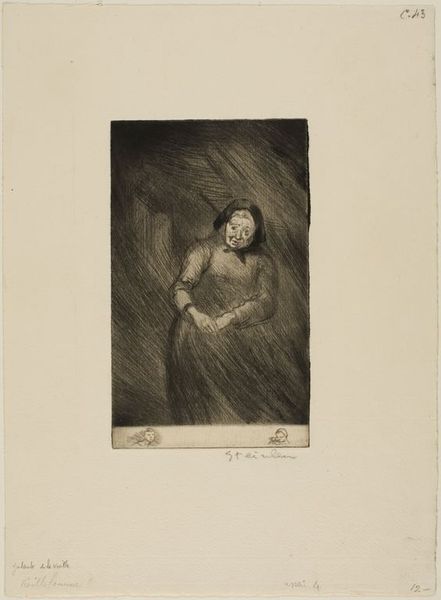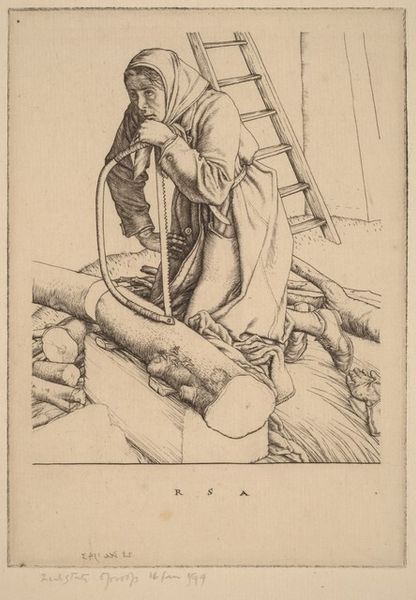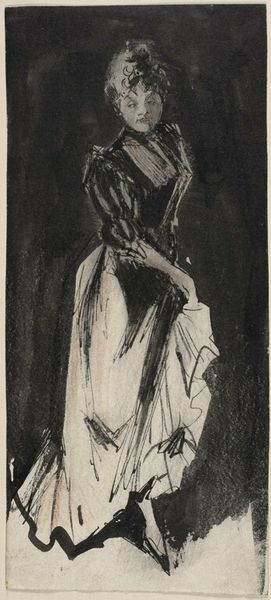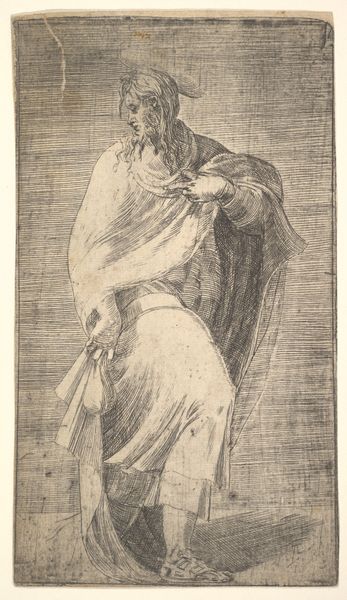
drawing, etching, ink
#
portrait
#
drawing
#
ink drawing
#
etching
#
figuration
#
ink
#
abstraction
Dimensions: plate: 11.8 x 7.1 cm (4 5/8 x 2 13/16 in.) sheet: 16.8 x 10.2 cm (6 5/8 x 4 in.)
Copyright: National Gallery of Art: CC0 1.0
Václav Zykmund created this etching on a metal plate sometime in the mid-20th century, and the print you see here is the impression it made on paper. This work encapsulates the surrealist movement’s fascination with the unconscious mind and the distortion of reality. Made in Czechoslovakia, the print’s title “Vlámská Skola” translates to “Flemish School,” a telling, if ironic, reference to the traditions of Northern Renaissance painting. Zykmund clearly engages with, and departs from, such traditions in the grotesque figuration of the woman. This was produced during a time of immense political upheaval in Czechoslovakia, under communist rule. Art became a subtle but powerful form of resistance and commentary. Artists often utilized symbolism and abstraction to critique the existing social and political order. Understanding art like this requires a look into the social and institutional contexts from which it emerged. What was the status of art schools? How did censorship affect artistic expression? These are some of the questions to consider when examining this work.
Comments
No comments
Be the first to comment and join the conversation on the ultimate creative platform.
